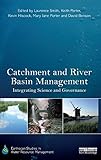Catchment and river basin management: integrating science and governance / edited by Laurence Smith, Keith Porter, Kevin Hiscock, Mary Jane Porter and David Benson
Smith, Laurence Laurence E. D [editor] | Porter, Keith [editor/a] | Hiscock, Kevin [editor/a] | Porter, Mary Jane [editor/a] | Benson, David [editor/a].
Tipo de material: Libro
impreso(a)
Series Editor: Abingdon, Oxon, United Kingdom: Routledge, 2015Descripción: xviii, 292 páginas ; 24 centímetros.ISBN: 1849713049; 9781849713047.Tema(s): Manejo de cuencas hidrográficas
Libro
impreso(a)
Series Editor: Abingdon, Oxon, United Kingdom: Routledge, 2015Descripción: xviii, 292 páginas ; 24 centímetros.ISBN: 1849713049; 9781849713047.Tema(s): Manejo de cuencas hidrográficas| Tipo de ítem | Biblioteca actual | Colección | Signatura | Estado | Fecha de vencimiento | Código de barras |
|---|---|---|---|---|---|---|
| Libros |
Biblioteca Villahermosa
Texto en la configuración de la biblioteca Villahermosa |
Acervo General | 333.7316 C37 | Disponible | ECO050006029 |
Incluye bibliografía e índice: páginas 280-292
List of figures.. List of tables.. List of boxes.. Notes on contributors.. Foreword.. Acknowledgements.. Part I.. Overview.. 1. The Challenge of Protecting Water Resources.. an Introduction and the Purposes of this Book.. 2. Key Questions about Catchment Management.. Part II.. Case Studies.. 3. The Upper Susquehanna River Basin.. Headwaters of a National Treasure - The Chesapeake Bay.. 4. New York City Watershed Program.. A National Paradigm?.. 5. The Hudson River Watershed, New York State, USA.. 6. Healthy Waterways, South East Queensland, Australia.. 7. Groundwater Protection Programmes in Denmark, Germany and the Netherlands.. 8. The WWF RIPPLE Project (Rivers Involving People, Places and Leading by Example, Ulster, Northern Ireland.. 9. Opening up Catchment Science.. an Experiment in Loweswater, Cumbria, England.. Part III.. Lessons for Catchment and River Basin Management.. 10. Getting Started.. Partnerships, Collaboration, Participation and the Role of Law.. 11. Getting Informed.. Tools and Approaches for Assessment, Planning and Management.. 12. Getting Things Done and Getting Results.. 13. Conclusions and Future Challenges.. Index
The central focus of this volume is a critical comparative analysis of the key drivers for water resource management and the provision of clean water - governance systems and institutional and legal arrangements. The authors present a systematic analysis of case study river systems drawn from Australia, Denmark, Germany, the Netherlands, UK and USA to provide an integrated global assessment of the scale and key features of catchment management. A key premise explored is that despite the diversity of jurisdictions and catchments there are commonalities to a successful approach. The authors show that environmental and public health water quality criteria must be integrated with the economic and social goals of those affected, necessitating a 'twin-track' and holistic (cross-sector and discipline) approach of stakeholder engagement and sound scientific research. A final synthesis presents a set of principles for adaptive catchment management. These principles demonstrate how to integrate the best scientific and technical knowledge with policy, governance and legal provisions. It is shown how decision-making and implementation at the appropriate geographic and governmental scales can resolve conflicts and share best sustainable practices. eng
